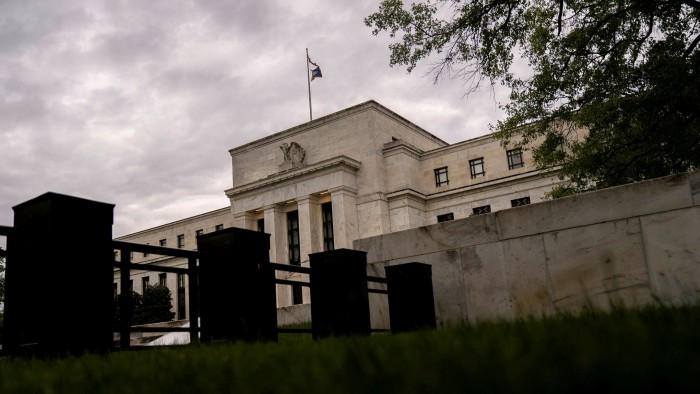Fed warns of hidden leverage lurking in financial system

Simply sign up to the US financial regulation myFT Digest -- delivered directly to your inbox.
The US Federal Reserve has warned that existing measures of hedge fund leverage “may not be capturing important risks”, pointing to the collapse of Archegos Capital as an example of hidden vulnerabilities in the global financial system.
The US central bank’s semi-annual report on financial stability found that some asset valuations are “elevated relative to historical norms” and “may be vulnerable to significant declines should risk appetite fall”.
But the Fed also acknowledged that regulators lack the tools to monitor the risk taking of traders like Bill Hwang, who placed large leveraged bets on stocks through his Archegos family office.
“The Archegos event illustrates the limited visibility into hedge fund exposures and serves as a reminder that available measures of hedge fund leverage may not be capturing important risks,” said Lael Brainard, the Fed governor who chairs the central bank’s committee on financial stability.
She added: “The potential for material distress at hedge funds to affect broader financial conditions underscores the importance of more granular, higher-frequency disclosures.”
The warning about unseen hedge fund risks came as the Fed also expressed concerns that a worsening of the global pandemic “could stress the financial system in emerging markets and some European countries”. The impact in emerging market countries could be exacerbated if global interest rates “were to rise abruptly”, it added.
In the US, the central bank said “some businesses and households remain under considerable strain” even as an improving economy, low interest rates and government support have helped corporations and consumers service debts.
The Fed said that “banks remain well capitalised, and leverage at broker-dealers is low”. Existing measures of hedge fund leverage are “somewhat above their historical averages”, it said, adding that the data “may not capture important risks from hedge funds or other leveraged funds”.
Hwang’s high-wire act was hard to monitor because family offices face limited disclosure requirements and because he used derivatives known as equity total return swaps. These instruments enabled Archegos to profit from rises in individual stocks with payments equal to only a fraction of the size of the underlying positions.
Banks that took the other side of the wagers tried to hedge their risks by buying the underlying equities, but ran into trouble when Hwang’s fortunes waned and he failed to meet margin calls. The banks dumped their shares, suffering more than $10bn in losses — including $5.4bn for Credit Suisse and $2.9bn for Nomura.
Compounding the frustrations of US regulators is that the biggest losses in the Archegos affair were suffered by banking desks directly supervised by officials in other countries.
US regulators signalled their concerns about hidden leverage in the financial markets soon after Archegos blew up. In March, the Financial Stability Oversight Council, headed by US Treasury secretary Janet Yellen, restarted its hedge fund oversight group to assess risks taken by leveraged investment funds.
Gary Gensler, new chair of the Securities and Exchange Commission, told the House financial services committee this week that he had directed his staff to consider new disclosure requirements for the total return swaps employed by Archegos.
Comments